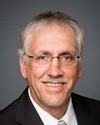The 53% rate is not new.
You heard what Mr. Jean-Pierre Corbeil said last week. He talked about the 53% and the 43% or 44%. The 53% includes the students from Quebec. Mr. Corbeil said that the 44% represents the people outside Quebec. That explains the difference.
We have been over the 50% mark for students who take French or English as a second language for some years now. We cannot really achieve 100%. We will never reach 100%, because we must understand that we are talking about students who happen to take French courses in a given year. However, in most provinces, that varies a lot, even in the provinces where French as a second language or English as a second language are mandatory, because that only lasts for a certain number of years during school.
For instance, in Ontario, second language training is mandatory from grade 4 to grade 8. Ontario students must take French as a second language courses. This means that 100% of English-speaking Ontarians will take French courses in school or vice versa for Franco-Ontarians. However, we will never get 100% of students in Ontario taking French courses in the same year. First and second graders are not taking the courses, and twelfth graders are not required to take them.
In short, a 53% rate is meaningful. It is a large percentage, but if we were to calculate the number of students who have an opportunity to learn the other language or to at least get introduced to the other language in school, we are closer to 100% than 53%. We don't have the exact percentage, but we know that French as a second language is mandatory in all the provinces to the east of Manitoba. It is optional in western Canada, but it is still used extensively. All the school boards offer French as a second language courses and, where courses are offered in more than one language, French is chosen by the majority as a second language. The 53% is therefore a meaningful rate, but the real number is even higher if we include all the students who, at some point during their schooling, choose French as a second language.




